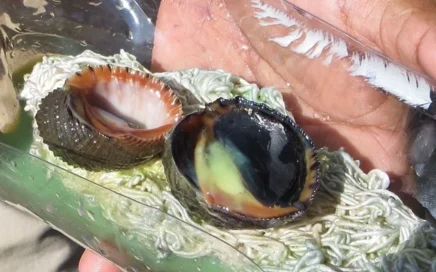
The Poisonous Granular Frog
AUTHOR: Josue Alberto Vargas Montoya (14 years of age)
The spectacular family of poisonous frogs (Dendrobatidae) surprises with its beautiful and colorful and lethal frogs. In Costa Rica, we have eight species of poisonous frogs. Those of the genus "Silverstoneia" and "Allobates" are not harmful.
The genus "Oophaga" is famous for its "pants," and the only two species of Oophaga of Costa Rica (O. Pumilio and O. Granulifera) are those that present pants.
The Granular Poisonous Frog (Oophaga Granulifera) is endemic to the Central Pacific and southern Costa Rica and part of Panama. It can be located near gorges in the woods.
In Costa Ballena, you can find the Red morpho with its green pants and his back "Granular," hence its name.
no images were found
After Hacienda Barú towards the Central Pacific, its main red color changes to Orange for the Matapalo sector, yellow in Portalón, and finally an olive green in San Rafael, Quepos always with its green and sometimes light blue pants.
These frogs are in danger due to the loss of their habitat. It is also exploited by smugglers to sell them as Terrarium pets.
Its venom is neurotoxic and very dangerous. It is not recommended to manipulate animals in freedom, especially the beautiful multicolored frogs.
The dangerous thing would be for the poison to reach a wound, or you would suck it.
Indigenous peoples used the poison of these frogs for hunting, smearing the poison on their arrows. That is why some of them are called "arrowhead frogs or dart frogs" in general (phyllobates).
Granular poisonous frogs are well distributed in Costa Ballena. It is a great attraction for tourists and so of interest for tour guides. Costa Ballena is one of the main places to see the Red Morpho, one of the granular venomous frogs.
They are diurnal, and males are heard singing to attract females to reproduce. The female lays her eggs in leaf ponds in the forest. As the hours pass, the eggs become tadpoles waiting for their father to place them in a bromeliad where they will be safe.
The mother feeds them with infertile eggs until they grow and can find food on their own.
Swimming for Life
Who says mermaids do not exist? A mermaid “Swimming for Life” By Leonie Ruhland Renate Herberger, a German mermaid living in Canada, is taking the term “swimming for life” very seriously. For many years, she […]
ENVISION 2014
By Leonie Ruhland Ballena Tales joined the magic; it became part of the color, the passion, and the creativity. The 4th Envision festival, took place in the idyllic neighborhood of Uvita. Hundreds of envisionaries […]

Milking of the Murex snail at Ventanas Beach
The art of milking of the Murex snail has its origins in the 4th century B.C. Cleopatra used that procedure to dye in purple the sails of her boat.
Playa Hermosa – beaches of Costa Ballena
Playa Hermosa – one of the most beautiful and largest beaches of Costa Ballena By Andreas Reinschmidt Playa Hermosa, as the name suggests, is one of the most beautiful and largest beaches of Costa Ballena. […]
Sierpe Mangrove Tour
Mangrove Tour, you will be delighted observing the variety and abundance of wildlife and bird species. Squirrel, howler, and cappuccino monkeys, huge crocodiles
It´s About TIME
By Pilar Salazar A few days ago, I stopped everything I was doing and went for a run. I must admit I felt a little guilty about it. My ‘to-do-list’ was biglong, as it tends […]
What to do, Where to eat and Where to stay…
- Activities and Tours
- Whale Watching Tour
- Natural Attractions
- Marino Ballena National Park
- Restaurants
- Hotels and Accommodations
Looking for business directories, maps or other printouts? We’ve got that too!
- Tide Charts
- Bus Schedules
- Dominical Business Directory
- Uvita Business Directory
- Costa Ballena Map
- Dominical map
- Uvita map
- Ojochal map
South Pacific Costa Rica Beaches
Dare to Discover and Enjoy…
Check out…
Need help planning your next trip? Let us help you with your Costa Rica vacations!
Email: carlos@ballenatales.com
Phone: +(506) 8946 7134 or +(506) 8914 1568
